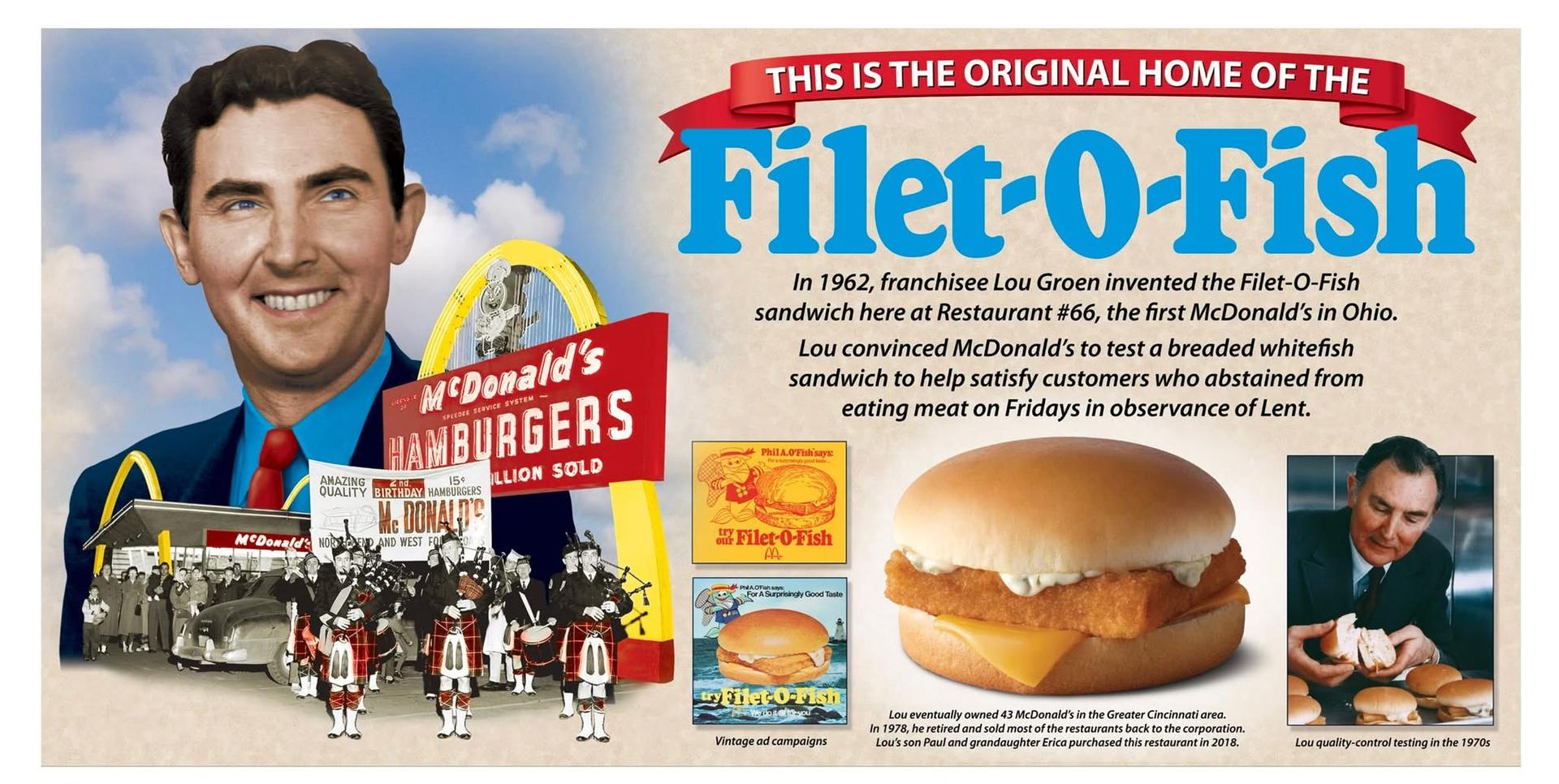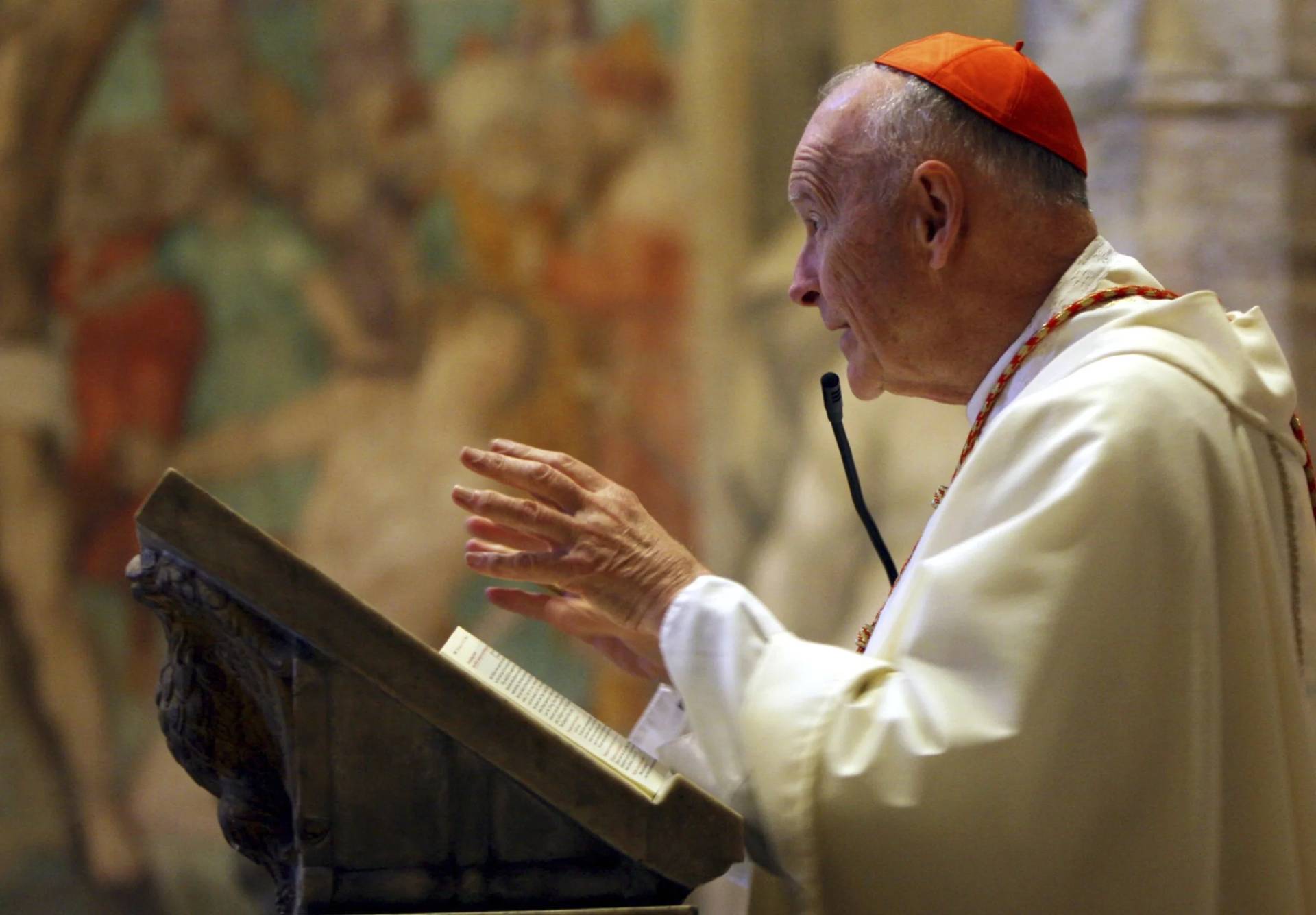NEW YORK – Not long after Lou Groen opened a McDonald’s franchise on the west side of Cincinnati in 1959, did he realize that on Fridays during Lent the local Catholic community took their business to a nearby Frisch’s Big Boy for a fish sandwich, instead of to McDonald’s for a hamburger.
That’s when Groen, a Catholic himself, came up with a menu item to save the business: A fish sandwich.
“My grandfather was really about to lose his franchise. I mean, even today it’s pennies on the dollar that you’re making on each transaction so to lose a whole day of sales was just not tenable,” Erica Shadoin, Groen’s granddaughter who today owns that same McDonald’s franchise at 5425 West North Bend Road in Cincinnati, told Crux.
“My grandfather knew most of his customers, and he knew that a fish sandwich was something that he was going to need to entice them, especially during the Lenten period,” she said.
Little did Groen know when he had the idea that not only would what became known as the “Filet-O-Fish” sandwich save his franchise, but it would become a popular and permanent fixture on the McDonald’s menu worldwide with more than 300 million sold on an annual basis.
As the story goes, once Groen had the idea to add a fish sandwich to the menu of his McDonald’s franchise he got to work on a recipe, ultimately settling on a breaded halibut fish sandwich. He chose halibut, Shadoin said, because its “white, flaky, and wild flavor” fit the flavor profile he was looking for.
The original concept was the breaded fish filet and Groen’s original tartar sauce recipe on a steamed bun. It didn’t originally include a slice of cheese. However, legend has it that one day Groen saw an employee put a slice of cheese on a fish sandwich he was making for himself and thought it was a brilliant idea.

After perfecting the recipe over a number of weeks, Groen traveled to the company headquarters in Oak Brook, Illinois to pitch the idea to Fred Turner, at the time the McDonald’s head of operations and an eventual CEO of the company; and Ray Kroc, McDonald’s first franchise agent, the corporation’s founder, and its longtime leader.
“Ray Kroc immediately said ‘I don’t want any dirty, smelly, fish in my restaurant. We sell hamburgers and french fries, and the Catholics will eat hamburgers and french fries just like everybody else,’” Shadoin said. “They went back and forth over a number of weeks, but my grandfather was persistent.”
Groen then went back and met with Kroc again, and they made a deal, though not to make the Filet-O-Fish available. The deal was that on a Friday during Lent they would each sell their concept for a McDonald’s meatless menu item, and whichever one sold more would become a mainstay.
Groen’s, of course, was the fish sandwich.
Kroc’s, meanwhile, was the “hula burger” – a slice of grilled pineapple and a piece of cheese on a bun.
“My grandfather said as soon as he heard Ray’s idea he knew immediately that his would win out … and so needless to say there were a lot more halibut fish sandwiches sold than grilled pineapple sandwiches, and so at that point that’s how McDonald’s started allowing franchisees to add it to the menu.”
On Good Friday in 1962, Groen sold 350 sandwiches for 25 cents each.
By 1963, the fish sandwich had done so well that it was rolled out to the entire system. It sold 2,324 in its first month as a mainstay on the McDonald’s menu at .35 cents apiece.
“He was ecstatic,” Shadoin said of her grandfather’s reaction to the menu addition. “Growing up on the west side of Cincinnati the entire area is very Catholic, and I don’t think that he would have made it had he not had the opportunity to compete with Frisch’s.”
Today, the standard price of a McDonald’s Filet-O-Fish is $4.59, according to the corporate website. Shadoin said the original location where Goren created it sells close to 800 of them on Good Friday. The restaurant also contains a tribute to Groen on the wall, with a history of the sandwich.
“It’s still a very popular restaurant for the fish sandwich just given the Catholic roots that are in that area, and it’s kind of iconic as well for being the birthplace of the Filet-O-Fish sandwich,” Shadoin said.
The recipe has been modified slightly since the original.
Today, the sandwich is made with a wild caught Alaskan pollock – a more affordable option compared to the halibut. It also has half a slice of cheese instead of a full slice to allow the fish and tartar sauce to do most of the talking. In general, though, the bones of the recipe are the same: A steamed bun, American cheese, tartar sauce, and the fish filet patty.
Shadoin said there’s “a lot of family pride” in their McDonald’s history.
Groen found his way into the McDonald’s brand after meeting Kroc at the National Restaurant Show in Chicago. At the time, he signed a territory for Ohio, Kentucky and Indiana to have all three of those states. The Cincinnati location at 5425 West North Bend Road, where he created the Filet-O-Fish, was the 66th McDonald’s franchise opened. When Groen retired in 1985, he owned 41 other franchises, as well.
Groen died in 2011 at the age of 93.
Shadoin’s dad was also a McDonald’s franchisee. He retired two years ago with 12 restaurants. Now, Shadoin and her brother are third generation franchisees. She has 19 restaurants in the Cincinnati, Northern Kentucky, southeast Indiana area.
“They say in our family that we have ketchup in our veins, and that’s true,” Shadoin said. “I grew up working at McDonald’s. I went to college and left the Cincinnati area and did something else for a while, but it always drew me back in, and so once you have ketchup in your veins it’s hard to get away.”
Follow John Lavenburg on X: @johnlavenburg


















